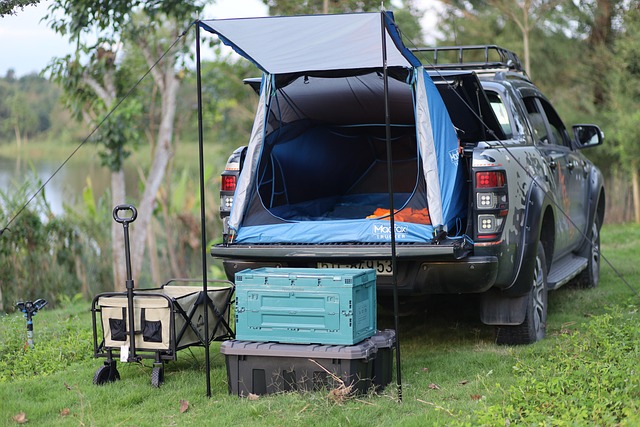Looking to register your car in California? This guide breaks down the process step-by-step, ensuring a smooth transition. First, understand California’s specific car registration requirements for vehicles, including VIN (Vehicle Identification Number) verification. Gather essential documents, perform a VIN check with the DMV, and choose an approved registering agency or dealership. Then, complete and submit your registration application form accurately. Follow these steps to register your vehicle hassle-free in The Golden State.
- Understand California Car Registration Requirements
- Gather Necessary Documents for VIN Verification
- Perform Vehicle Identification Number (VIN) Check
- Select an Approved Registering Agency or Dealership
- Complete and Submit the Registration Application Form
Understand California Car Registration Requirements

Before registering your car in California, it’s crucial to understand the state’s specific requirements for vehicle registration. One key aspect is ensuring the Vehicle Identification Number (VIN) is verified accurately. This process involves a thorough inspection to confirm the vehicle’s make, model, year, and other essential details. The California Department of Motor Vehicles (DMV) mandates this VIN verification as a critical step in the registration procedure.
A mobile vin verifier or inspector can play a significant role here, offering convenient services that align with modern lifestyles. These mobile options allow you to get your VIN inspected off-site, saving time and effort compared to traditional methods. This approach is especially beneficial when dealing with out-of-state purchases or when your vehicle requires unusual or specialized inspections.
Gather Necessary Documents for VIN Verification

Before you begin the registration process, it’s crucial to gather all the essential documents for VIN verification. The California Department of Motor Vehicles (DMV) requires a valid Vehicle Identification Number (VIN) inspection report as part of the registration procedure. This includes proof of your vehicle’s unique VIN, which can be found on the vehicle’s title or certificate of ownership, and in most cases, on a label inside the driver’s door frame.
Additionally, you may want to consider using a mobile vin verifier or conducting a mobile vin inspection for convenience and speed. These services allow you to verify your vehicle’s VIN without visiting a DMV office, saving you time and effort while ensuring compliance with California’s requirements for VIN verification during car registration.
Perform Vehicle Identification Number (VIN) Check

Before you begin the registration process, it’s crucial to perform a Vehicle Identification Number (VIN) check. This step is essential for ensuring that your vehicle’s history is clear and accurate. A VIN verification involves cross-referencing the unique 17-character identifier with databases to gather critical information about the car, including its previous owners, maintenance records, and any reported accidents or damage.
In California, you can facilitate this process through a mobile VIN verifier, which offers a convenient and efficient way to conduct a vin inspection. This technology allows you to quickly access detailed vehicle history reports, saving time and effort compared to traditional methods. By ensuring your car has passed the necessary checks, you set the stage for a smooth registration experience.
Select an Approved Registering Agency or Dealership

When registering your car in California, choosing an approved registering agency or dealership is a crucial step in ensuring a smooth process. These entities are licensed and authorized by the state to handle vehicle registration, including performing essential checks like VIN (Vehicle Identification Number) verification. A reputable agency will offer accurate and reliable VIN inspection services, which is critical for matching the car’s details with its history.
Opting for an approved dealer or a mobile VIN verifier can simplify the process, as these professionals have access to state databases and can quickly validate the vehicle’s ownership, history, and any potential issues. A mobile VIN verification service, for instance, brings the inspection to you, making it convenient especially if you’re registering a car that’s not currently drivable. This ensures that your registration is accurate and compliant with California’s regulations, avoiding future complications.
Complete and Submit the Registration Application Form

To begin the registration process for your car in California, you’ll need to complete and submit the Registration Application Form, also known as the DMV Form 260. This form requires detailed information about both you and your vehicle. Make sure all data is accurate and up-to-date, including your personal details, driver’s license number, and the Vehicle Identification Number (VIN). The VIN is a unique code that can be used for mobile vin inspection or mobile vin verification, ensuring the vehicle’s history is checked against potential fraud or undisclosed issues.
Fill out the form completely, double-checking each field. Submit it to the California Department of Motor Vehicles (DMV) along with necessary documents and fees. You may also opt for a mobile vin verifier to streamline the process by having your vehicle’s VIN verified on-site, which can be particularly useful if you’re registering a car purchased privately or from out of state.
Registering a car in California involves understanding specific requirements, gathering essential documents for VIN verification, and completing key steps. By performing a vehicle identification number (VIN) check, selecting an approved registering agency or dealership, and accurately filling out the registration application form, you can ensure a smooth process. Remember to keep your documentation up-to-date for future reference and compliance with California’s car registration regulations.



